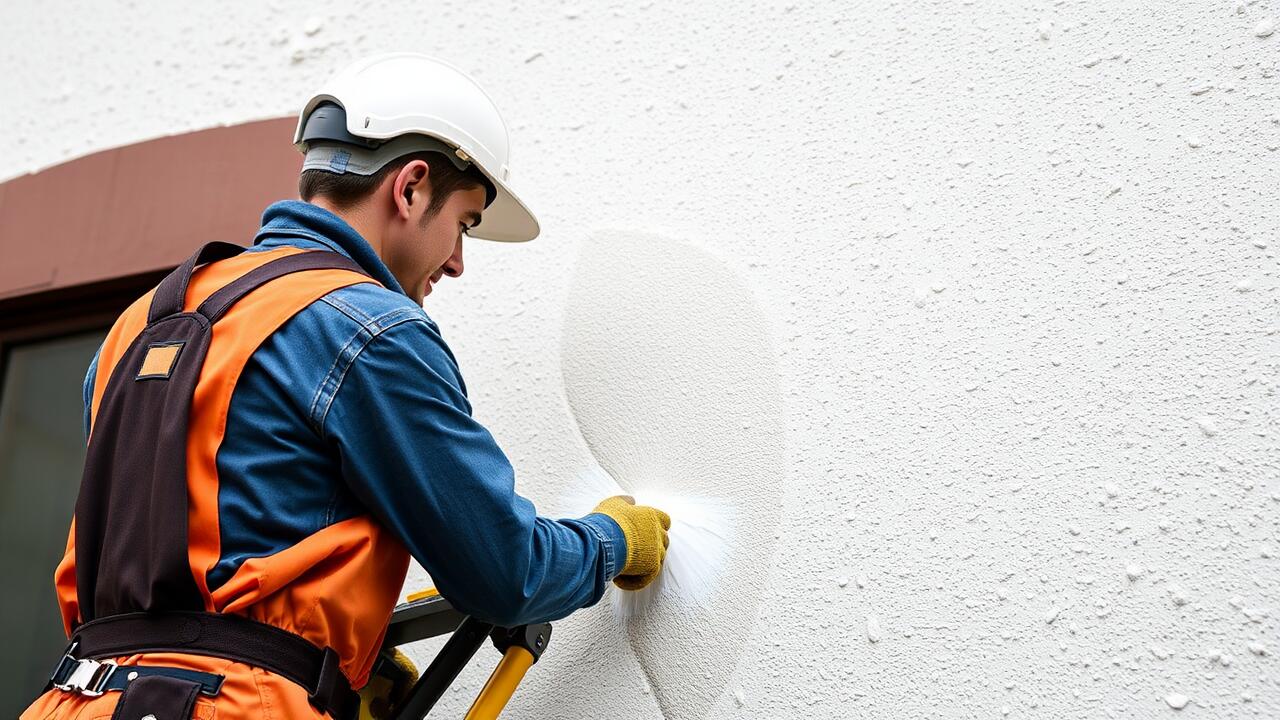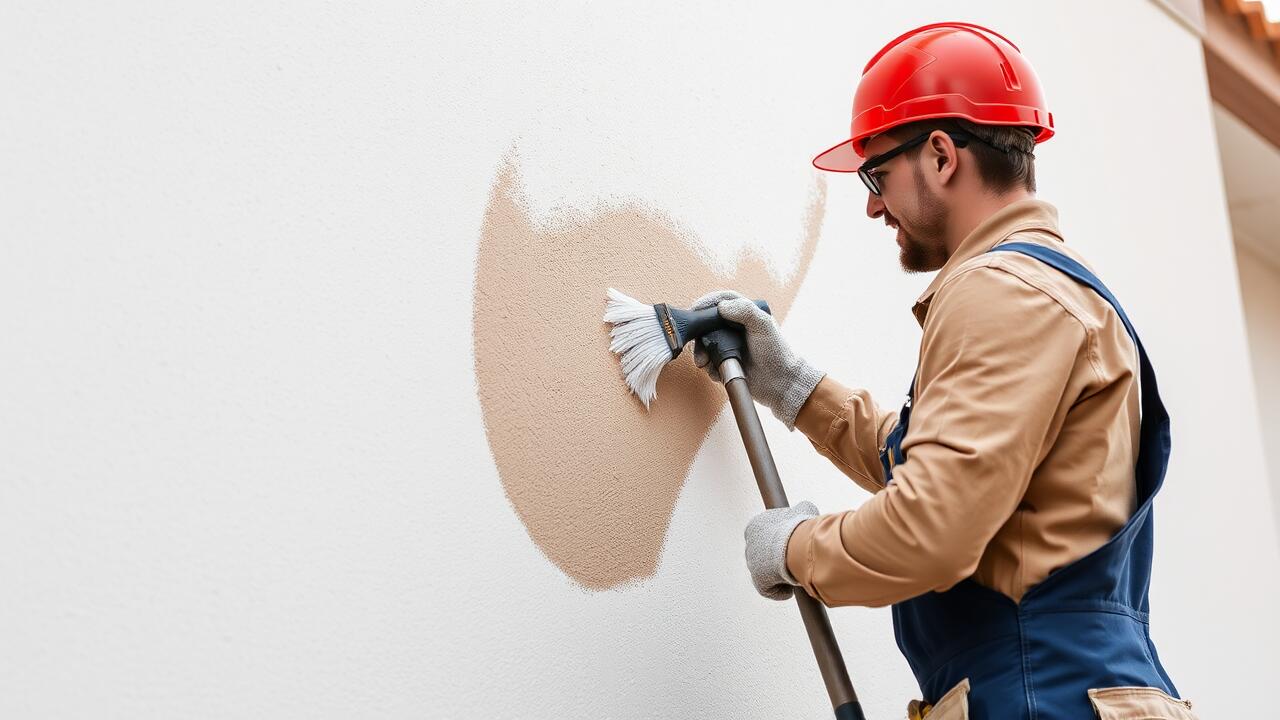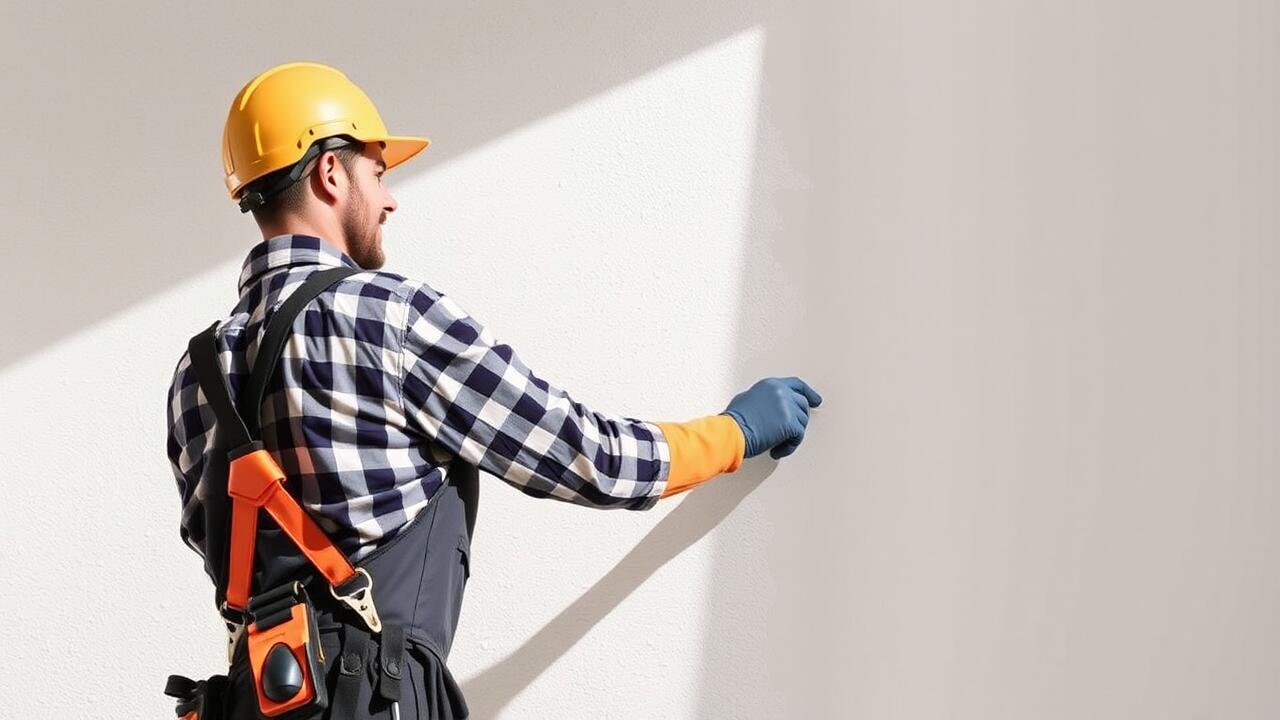
Preparing Stucco for Painting
Preparing stucco for painting involves several important steps to ensure a smooth and lasting finish. Start by checking the surface for any cracks, peeling paint, or other imperfections that may need repair. Cleaning the stucco thoroughly is essential, as dirt and debris can interfere with paint adhesion. A power washer or a stiff-bristled brush can effectively remove any buildup. Allow the surface to dry completely before moving on to priming, especially in areas where repairs have been made.
After ensuring the surface is clean and dry, applying a high-quality primer suited for stucco is the next step. This product helps seal the porous surface and improves paint adhesion. For local services, consider looking into Studio City, Los Angeles Stucco Painting experts who can guide you through this process. Proper preparation not only enhances durability but also contributes to the overall appearance of the final paint job.
Essential Steps Before Applying Paint
Proper preparation is crucial before painting stucco surfaces. Begin by cleaning the area thoroughly to remove dirt, mildew, and any loose particles. Using a pressure washer can help achieve a deep clean, ensuring that the surface is free from contaminants. After washing, allow the stucco to dry completely before proceeding. Inspect the stucco for cracks or damage that may need repair. Filling cracks with a stucco patch compound will create a smooth surface for painting.
Once repairs are complete, applying a primer becomes the next essential step. A quality primer helps seal the stucco, providing better adhesion for the paint and enhancing its durability. When considering options for stucco painting, it's advisable to consult services like Chatsworth, Los Angeles Stucco Painting, which can offer insights and support tailored to the unique characteristics of the local environment and the specific needs of your project. Taking these preparatory steps can significantly improve the final results of your painting endeavor.
Application Techniques for Stucco Painting
When applying paint to stucco, it is essential to choose the right tools for the job. A good-quality paint sprayer can deliver a smooth, even coat over the textured surface. This method minimizes the need for multiple applications and allows the paint to reach intricate crevices. For smaller areas or touch-ups, using a brush or roller specifically designed for textured surfaces will help achieve a consistent finish.
In Chatsworth, Los Angeles Stucco Painting projects, the choice of paint plays a critical role in the application process. Opting for high-quality, breathable exterior paint can enhance the durability of the finish and protect against moisture. It is recommended to work in sections, applying the paint in a uniform manner to avoid overlap marks and ensure thorough coverage. Maintaining steady pressure on the sprayer or brush helps achieve a more uniform appearance across the stucco surface.
Best Practices for Even Coverage
Achieving even coverage when painting stucco surfaces is essential for a professional finish. Start by using high-quality paint specifically designed for stucco or textured surfaces. Applying a primer can enhance adhesion and create a more uniform look. Utilize a spray gun for large areas, as it helps to reach into the crevices of the texture. For smaller sections, a roller or brush can provide better control. Always work in manageable sections to maintain a wet edge, preventing uneven drying and ensuring consistency in appearance.
In Reseda, Los Angeles stucco painting projects, it’s vital to keep an eye on local weather conditions. Avoid painting on extremely hot days, as this can lead to rapid drying and visible lap marks. Additionally, consider the time of day when applying paint. Painting during cooler parts of the day often results in better adhesion and coverage. Don’t forget to back-roll the surface after spraying to fill in any missed spots and achieve a smooth, even finish. Following these best practices will ensure that your stucco painting project looks cohesive and visually appealing.
Common Mistakes When Painting Stucco
One common mistake when painting stucco is neglecting proper surface preparation. Cleaning the stucco thoroughly is essential to remove dirt, mildew, and old paint. Failing to address surface imperfections can lead to poor adhesion of the new paint and unsightly results. Ensuring the surface is dry before applying any paint is equally important. This step significantly enhances the longevity of the paint job.
Another mistake is applying the paint too thickly in one coat instead of following the recommended two-coat method. Thick applications can lead to uneven coverage and premature peeling. Using a sprayer may seem efficient, but it can also create overspray and inconsistent layers if not handled properly. Homeowners seeking professional quality may consider services that specialize in Chatsworth, Los Angeles stucco painting for optimal results.
Pitfalls to Avoid During the Process
One common pitfall when painting stucco is the failure to properly prepare the surface. Neglecting to clean off dirt, mold, or loose particles can lead to poor adhesion and uneven paint application. Before any paint touches the stucco, it is essential to ensure that the surface is thoroughly cleaned. This step is especially important in areas like Reseda, Los Angeles, where environmental factors can contribute to the buildup of grime on exterior surfaces.
Another mistake involves using the wrong type of paint or applying it incorrectly. Standard interior paints do not typically hold up well on stucco due to its porous nature. Instead, choosing a high-quality exterior paint formulated for stucco is crucial. Pay attention to application techniques as well. Rushing through the process can result in streaks or an uneven finish. Taking time with each coat can help achieve a durable and visually appealing outcome.
FAQS
Does stucco need two coats of paint?
Typically, stucco surfaces benefit from two coats of paint for optimal coverage and durability. The first coat serves as a primer, while the second coat provides the final finish and color depth.
What type of paint is recommended for stucco?
Acrylic latex paint is often recommended for stucco, as it allows for breathability and adheres well to textured surfaces. Additionally, it offers good UV resistance and durability.
How long should I wait between coats of paint on stucco?
It's generally advisable to wait at least 24 hours between coats of paint on stucco. However, drying times can vary based on temperature and humidity, so checking for complete dryness is important before applying the second coat.
Can I paint stucco without primer?
While it's possible to paint stucco without primer, using a primer coat is highly recommended. Primer helps seal the surface, improves paint adhesion, and enhances the final appearance.
What are some common mistakes to avoid when painting stucco?
Common mistakes include skipping surface preparation, using the wrong type of paint, not allowing sufficient drying time between coats, and failing to apply enough paint for full coverage. It’s crucial to follow best practices for a successful finish.



